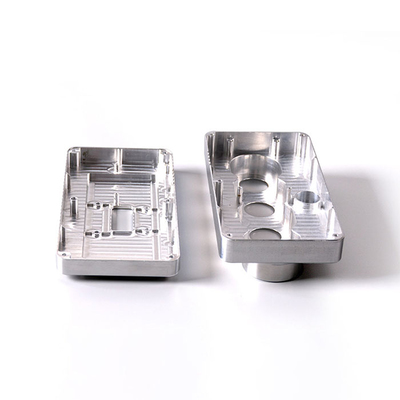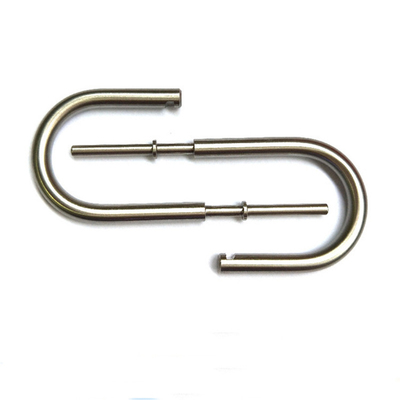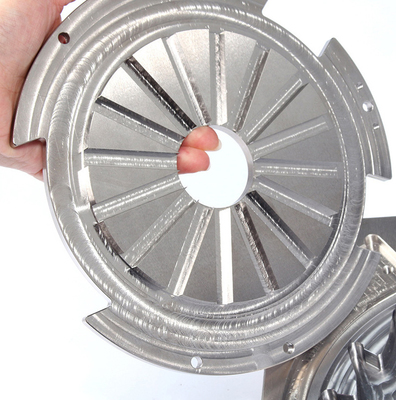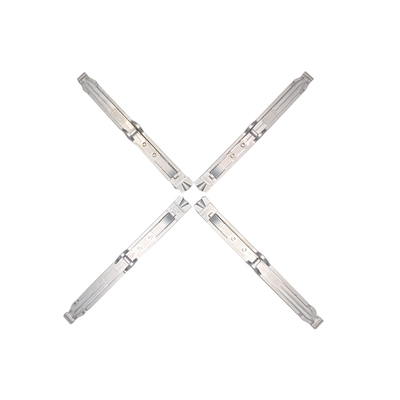Research on Five-Axis CNC Multi-Scale Tool Path Optimization and Residual Stress Control for Aero-Engine Blade Processing
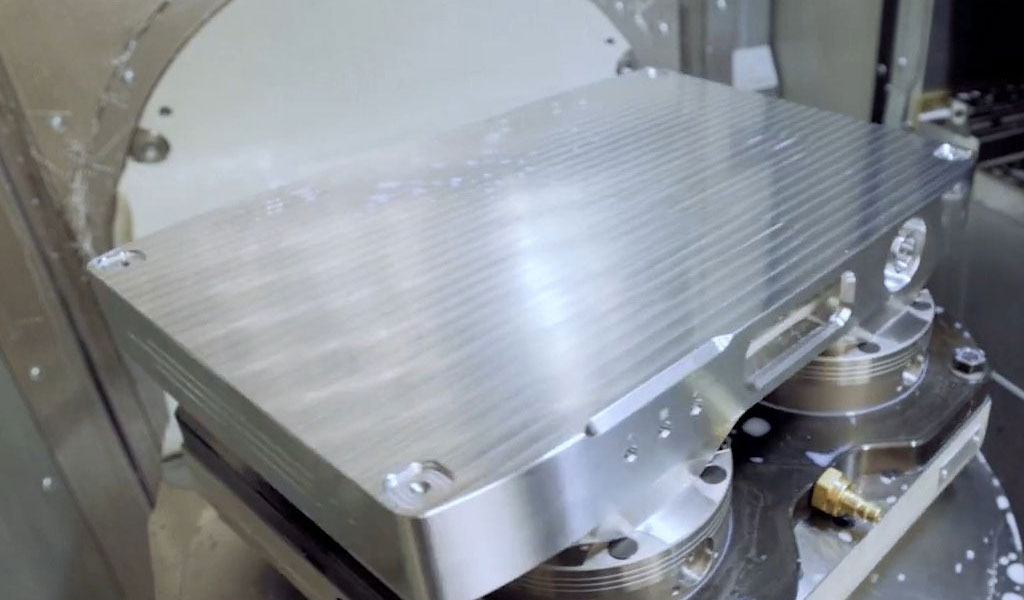
Five-axis computer numerical control (CNC) machining represents a pinnacle of modern manufacturing technology, enabling the production of complex geometries with high precision and efficiency. In the aerospace industry, particularly in the fabrication of aero-engine blades, five-axis CNC machining is indispensable due to the intricate freeform surfaces and stringent performance requirements of these components. Aero-engine blades, such as turbine and compressor blades, are critical to the functionality of jet engines, demanding exceptional accuracy, surface quality, and material integrity. However, the machining of these components introduces challenges, including tool path inefficiencies and residual stresses, which can compromise dimensional accuracy and component longevity. This article explores the research advancements in multi-scale tool path optimization and residual stress control in five-axis CNC machining of aero-engine blades, delving into methodologies, technologies, and their implications for aerospace manufacturing.
The complexity of aero-engine blades arises from their freeform surfaces, which require precise tool paths to achieve desired geometries while minimizing machining errors and stresses. Multi-scale tool path optimization addresses these challenges by integrating macro-scale strategies (e.g., overall tool path planning) with micro-scale adjustments (e.g., localized tool orientation and feed rate control). Residual stress, induced by cutting forces and thermal effects during machining, poses a significant risk to blade performance, potentially leading to fatigue failure or dimensional inaccuracies. Research in this domain focuses on predictive modeling, optimization algorithms, and advanced control strategies to enhance machining efficiency and component quality. This article synthesizes key findings, methodologies, and technological innovations, supported by comparative tables to elucidate the state of the art.
Background and Significance
Aero-Engine Blades: Design and Manufacturing Challenges
Aero-engine blades, including turbine blades, compressor blades, and impellers, are engineered to withstand extreme operating conditions, such as high temperatures, pressures, and rotational speeds. These components are typically made from high-strength materials like titanium alloys (e.g., Ti-6Al-4V), nickel-based superalloys (e.g., Inconel 718), or aluminum-based composites (e.g., Al3030). Their complex geometries, characterized by freeform surfaces, thin walls, and high aspect ratios, necessitate advanced manufacturing techniques. Five-axis CNC machining is preferred over three-axis systems due to its ability to orient the cutting tool in multiple directions, enabling access to intricate surfaces and reducing setup times.
The manufacturing of aero-engine blades involves several stages, including roughing, semi-finishing, and finishing. Each stage requires precise control over tool paths, cutting parameters, and machine dynamics to achieve the desired surface finish and dimensional accuracy. However, challenges such as tool deflection, vibration, and residual stress can lead to machining errors, including overcuts, undercuts, and surface irregularities. These issues are particularly pronounced in five-axis machining due to the additional rotational axes, which introduce kinematic complexities and nonlinear errors.
Importance of Tool Path Optimization
Tool path optimization is critical in five-axis CNC machining to minimize machining time, reduce tool wear, and enhance surface quality. Traditional tool paths, often composed of linear segments, can result in velocity, acceleration, and jerk discontinuities at segment transitions, leading to poor surface finish and increased machining errors. Multi-scale tool path optimization addresses these issues by considering both global (macro-scale) and local (micro-scale) factors. At the macro-scale, optimization focuses on the overall trajectory, ensuring minimal travel distance and collision avoidance. At the micro-scale, it involves fine-tuning tool orientations, feed rates, and cutting depths to maintain uniform material removal and reduce errors.
Residual Stress in Machining
Residual stress arises from mechanical and thermal loads during machining. Mechanical stresses result from cutting forces, while thermal stresses are induced by heat generation in the cutting zone. In aero-engine blades, residual stresses can lead to distortion, cracking, or reduced fatigue life, particularly in thin-walled structures like impeller blades. Controlling residual stress requires a combination of predictive modeling, optimized machining parameters, and post-processing techniques. Virtual machining systems, which simulate the machining process in a digital environment, have emerged as powerful tools for predicting and mitigating residual stresses.
Research Objectives
The primary objectives of research in this field are to:
-
Develop advanced tool path optimization algorithms that minimize machining errors and improve efficiency.
-
Predict and control residual stresses to enhance the structural integrity of aero-engine blades.
-
Integrate multi-scale approaches to balance macro-scale efficiency with micro-scale precision.
-
Validate these methodologies through simulations and experimental studies.
This article provides a comprehensive review of these efforts, focusing on the methodologies, algorithms, and experimental validations that have advanced the field.
Tool Path Optimization in Five-Axis CNC Machining
Principles of Five-Axis CNC Machining
Five-axis CNC machines incorporate three translational axes (X, Y, Z) and two rotational axes (typically A and C or B and C), allowing the cutting tool to approach the workpiece from any direction. This flexibility is crucial for machining complex geometries like aero-engine blades, which feature curved surfaces and tight tolerances. The additional rotational axes enable flank milling, where the side of the tool contacts the workpiece, and point milling, where the tool tip is used. However, the increased degrees of freedom introduce challenges such as kinematic coupling, nonlinear errors, and tool-workpiece collisions.
Multi-Scale Tool Path Optimization
Multi-scale tool path optimization integrates macro-scale and micro-scale strategies to achieve optimal machining outcomes. At the macro-scale, the goal is to generate a tool path that minimizes machining time, avoids collisions, and respects machine constraints (e.g., velocity, acceleration, and jerk limits). At the micro-scale, optimization focuses on localized adjustments, such as tool orientation and feed rate, to ensure uniform cutting forces and surface quality.
Macro-Scale Optimization
Macro-scale optimization involves planning the overall tool path trajectory. Common approaches include:
-
B-Spline and NURBS-Based Methods: These methods use parametric curves to represent tool paths, ensuring smooth transitions and continuity in velocity, acceleration, and jerk. For example, a study by Sencer et al. (2008) proposed a feed scheduling algorithm that expresses the tool path as a cubic B-spline, optimizing feed rates while respecting drive constraints.
-
Trochoidal Tool Paths: Trochoidal paths, characterized by circular or spiral motions, are effective for rough milling of complex components like blade-integrated disks (Blisks). A novel trochoidal tool path planning method with equal radial cutting depth in 3D space was proposed to reduce fluctuations in cutting forces.
-
Genetic Algorithms (GA): GA-based optimization is used to minimize non-productive time and optimize tool paths for complex surfaces. For instance, a study applied GA to optimize the machining of a 3616-hole problem, achieving significant reductions in machining time.
Micro-Scale Optimization
Micro-scale optimization focuses on localized adjustments to tool orientation, feed rate, and cutting depth. Key techniques include:
-
Tool Orientation Optimization: Proper tool orientation is critical for maintaining uniform machining strip width and avoiding interference. A multi-scale tool orientation generation method for bull-nose tools was developed to meet macro- and micro-scale requirements, achieving expected strip width and surface roughness.
-
Contouring Error Control: Contouring errors, resulting from deviations between the actual and ideal tool paths, are minimized through analytical prediction and compensation. An integrated method for compensating nonlinear errors using cutter contact (CC) point data was proposed, reducing contour errors by half in experimental validations.
-
Feed Rate Scheduling: Feed rate optimization ensures smooth operation within drive constraints. A computationally efficient feed scheduling algorithm was demonstrated for five-axis flank milling of impeller blades, minimizing machining time while respecting velocity, acceleration, and jerk limits.
Key Algorithms and Methodologies
Several algorithms have been developed to address tool path optimization challenges:
-
Ferguson Curve Approximation: Used for contour error estimation, this method approximates the curve between interpolation points, enabling fast and accurate error compensation.
-
Sliding Mode Control: A multi-input multi-output (MIMO) sliding mode controller was designed to control all five drives simultaneously, reducing contouring errors in high-speed machining.
-
Point Cloud-Based Tool Path Generation: This method uses point cloud data from 3D scans to generate tool paths, avoiding complex surface fitting. The residual height method achieved a 10.17% error rate in finishing paths with a computation time of 11.82 seconds.
Applications in Aero-Engine Blade Processing
Tool path optimization has been extensively applied to aero-engine blade processing, particularly for turbine blades and impellers. For example:
-
A study on five-axis flank milling of spiral bevel gears optimized tool paths and cutter geometry to improve machining accuracy, ensuring meshing performance.
-
The machining of steam turbine blades using Unigraphics NX6 CAD/CAM software demonstrated that optimized five-axis tool paths resulted in lesser dimensional deviations compared to conventional methods.
-
A trochoidal tool path planning method for Blisk milling reduced cutting force vibrations, improving surface quality and tool life.
Residual Stress Control in Five-Axis CNC Machining
Mechanisms of Residual Stress Formation
Residual stresses in machined aero-engine blades arise from:
-
Mechanical Loads: Cutting forces induce compressive or tensile stresses, particularly in thin-walled structures.
-
Thermal Loads: Heat generated in the cutting zone causes thermal expansion and contraction, leading to residual stresses.
-
Material Properties: High-strength materials like titanium and nickel alloys exhibit complex stress responses due to their microstructure.
These stresses can cause deflection errors, surface irregularities, and reduced fatigue life. For instance, thin-walled impeller blades are prone to overcuts or undercuts due to their flexibility.
Predictive Modeling of Residual Stress
Virtual machining systems are widely used to predict residual stresses and deflection errors. These systems employ finite element analysis (FEA) to simulate the machining process, considering factors such as:
-
Cutting forces
-
Machining temperatures
-
Tool geometry
-
Material properties
A notable study by Soori and Asmael (2021) developed a virtual machining system to predict residual stress and deflection in five-axis milling of turbine blades. The system used FEA to optimize machining parameters, achieving improved accuracy and efficiency.
Optimization Strategies for Residual Stress Control
Several strategies have been developed to minimize residual stresses:
-
Parameter Optimization: Optimizing cutting speed, feed rate, depth of cut, and step-over ratio reduces mechanical and thermal loads. For example, a study on Al3030 composites found that cutting speed and nose radius significantly affect surface quality and material removal rate.
-
Genetic Algorithm-Based Optimization: GA was used to minimize deflection errors in impeller blade machining, validated through experiments on a five-axis CNC machine.
-
Tool Path Smoothing: Smoothing tool paths reduces fluctuations in cutting forces, minimizing residual stresses. A continuity-preserving tool path generation method for flank milling of ruled surfaces achieved high-order continuity and reduced geometrical errors.
-
Chemical Mechanical Polishing (CMP): Post-processing techniques like rotary CMP were shown to improve surface quality and reduce residual stresses in integral impellers, achieving a 20-fold increase in polishing efficiency compared to manual methods.
Experimental Validation
Experimental studies validate the effectiveness of these strategies. For instance:
-
A five-axis CNC machine tool designed for aero-engine casing manufacturing demonstrated high accuracy and stiffness, reducing residual stresses through optimized structural design.
-
The use of a coordinate measuring machine (CMM) to inspect machined blades confirmed that optimized tool paths reduced dimensional deviations.
-
Vibration analysis using FEA and ANSYS Benchwork 14.0 helped identify optimal machining parameters to minimize residual stresses in turbine blade milling.
Integration of Multi-Scale Optimization and Residual Stress Control
Synergistic Approaches
Integrating multi-scale tool path optimization with residual stress control offers a holistic approach to improving aero-engine blade machining. Key synergistic strategies include:
-
Virtual Machining Systems: These systems simulate the entire machining process, predicting tool paths, cutting forces, and residual stresses. By optimizing parameters in a virtual environment, manufacturers can reduce trial-and-error in physical machining.
-
Digital Twins: Digital twins of five-axis machine tools model structural dynamics and servo interactions, enabling real-time optimization and stress prediction. A study developed a reduced-order multibody dynamic model that predicted vibrations with 88% accuracy.
-
AI and Machine Learning: Artificial intelligence (AI) and machine learning (ML) algorithms enhance optimization by analyzing large datasets from machining processes. For example, AI-driven predictive maintenance models improve fault detection and stress control.
Case Studies
Several case studies illustrate the integration of these approaches:
-
Impeller Blade Machining: A virtual machining system optimized tool paths and machining parameters for impeller blades, reducing deflection errors and residual stresses. The system was validated using a five-axis CNC machine and CMM measurements.
-
Spiral Bevel Gear Milling: Optimized tool paths and cutter geometry improved machining accuracy, with residual stress control achieved through parameter optimization.
-
Turbine Blade Finishing: A multi-scale tool orientation method ensured uniform strip width and reduced surface roughness, minimizing residual stresses.
Comparative Analysis of Methodologies
To elucidate the effectiveness of various approaches, the following tables compare key methodologies for tool path optimization and residual stress control.
Table 1: Comparison of Tool Path Optimization Methods
|
Method |
Description |
Advantages |
Limitations |
Applications |
Reference |
|---|---|---|---|---|---|
|
B-Spline Feed Scheduling |
Uses cubic B-spline to represent tool paths, optimizing feed rates within drive constraints. |
Smooth transitions, reduced machining time, respects velocity/acceleration limits. |
Computationally intensive for long tool paths. |
Impeller blade milling |
|
|
Trochoidal Tool Path Planning |
Generates spiral paths with equal radial cutting depth in 3D space. |
Reduces cutting force vibrations, improves tool life. |
Complex implementation for nonlinear surfaces. |
Blisk rough milling |
|
|
Genetic Algorithm Optimization |
Optimizes tool paths using evolutionary algorithms to minimize non-productive time. |
Handles complex constraints, scalable to large problems. |
Requires tuning of algorithm parameters. |
Multi-hole machining |
|
|
Point Cloud-Based Path Generation |
Uses point cloud data for tool path generation, avoiding surface fitting. |
High accuracy, reduced computation time (11.82 s for finishing paths). |
Dependent on quality of 3D scan data. |
Freeform surface machining |
|
|
Sliding Mode Control |
Controls all five drives simultaneously to minimize contouring errors. |
Reduces errors by half, improves surface quality. |
Requires advanced control systems. |
High-speed die/mold machining |
Table 2: Comparison of Residual Stress Control Strategies
|
Strategy |
Description |
Advantages |
Limitations |
Applications |
Reference |
|---|---|---|---|---|---|
|
Finite Element Analysis (FEA) |
Simulates cutting forces and temperatures to predict residual stresses. |
Accurate prediction, enables parameter optimization. |
Computationally expensive, requires detailed material models. |
Turbine blade milling |
|
|
Parameter Optimization |
Optimizes cutting speed, feed rate, and depth of cut to minimize stresses. |
Simple to implement, improves surface quality. |
Limited to specific materials and conditions. |
Al3030 composite machining |
|
|
Genetic Algorithm-Based Optimization |
Uses GA to minimize deflection errors and residual stresses. |
Handles multiple objectives, validated experimentally. |
Requires extensive computational resources. |
Impeller blade machining |
|
|
Tool Path Smoothing |
Smooths tool paths to reduce cutting force fluctuations. |
Improves surface finish, reduces stresses. |
May increase machining time for complex paths. |
Ruled surface milling |
|
|
Rotary Chemical Mechanical Polishing |
Post-processing to improve surface quality and reduce stresses. |
20x faster than manual polishing, high efficiency. |
Requires specialized equipment and slurry. |
Integral impeller polishing |
Challenges and Future Directions
Current Challenges
Despite significant advancements, several challenges persist:
-
Computational Efficiency: Many optimization algorithms, such as B-spline feed scheduling and FEA-based stress prediction, are computationally intensive, limiting their real-time applicability.
-
Material Variability: The diverse material properties of aero-engine blades (e.g., titanium vs. nickel alloys) require tailored optimization strategies.
-
Nonlinear Errors: The introduction of rotational axes in five-axis machining leads to nonlinear errors that are difficult to predict and compensate.
-
Integration with Industry 4.0: While digital twins and AI-driven methods show promise, their integration into existing manufacturing systems remains complex.
Future Research Directions
Future research should focus on:
-
Real-Time Optimization: Developing algorithms that can optimize tool paths and control stresses in real time, leveraging high-performance computing and edge AI.
-
Hybrid Manufacturing: Combining additive manufacturing with five-axis CNC machining to reduce residual stresses and improve material properties.
-
Advanced Materials Modeling: Enhancing FEA models to account for microstructural changes and anisotropic material behavior.
-
Sustainability: Optimizing tool paths to minimize energy consumption and environmental impact, aligning with sustainable manufacturing goals.
-
Standardization: Establishing standardized protocols for multi-scale optimization and stress control to facilitate industry adoption.
Conclusion
The research on five-axis CNC multi-scale tool path optimization and residual stress control has significantly advanced the manufacturing of aero-engine blades. By integrating macro-scale and micro-scale optimization strategies, researchers have achieved smoother tool paths, reduced machining errors, and improved surface quality. Predictive modeling and optimization techniques, such as FEA, GA, and digital twins, have enabled precise control of residual stresses, enhancing the structural integrity of critical components. Experimental validations and case studies demonstrate the practical impact of these advancements, particularly in aerospace applications. However, challenges like computational efficiency and material variability necessitate continued research. Future developments in real-time optimization, hybrid manufacturing, and sustainable practices promise to further elevate the precision and efficiency of aero-engine blade processing, solidifying five-axis CNC machining as a cornerstone of modern aerospace manufacturing.
Reprint Statement: If there are no special instructions, all articles on this site are original. Please indicate the source for reprinting:https://www.cncmachiningptj.com/,thanks!
 PTJ® provides a full range of Custom Precision cnc machining china services.ISO 9001:2015 &AS-9100 certified. 3, 4 and 5-axis rapid precision CNC machining services including milling, turning to customer specifications,Capable of metal & plastic machined parts with +/-0.005 mm tolerance.Secondary services include CNC and conventional grinding, drilling,die casting,sheet metal and stamping.Providing prototypes, full production runs, technical support and full inspection.Serves the automotive, aerospace, mold&fixture,led lighting,medical,bicycle, and consumer electronics industries. On-time delivery.Tell us a little about your project's budget and expected delivery time. We will strategize with you to provide the most cost-effective services to help you reach your target,Welcome to Contact us ( [email protected] ) directly for your new project.
PTJ® provides a full range of Custom Precision cnc machining china services.ISO 9001:2015 &AS-9100 certified. 3, 4 and 5-axis rapid precision CNC machining services including milling, turning to customer specifications,Capable of metal & plastic machined parts with +/-0.005 mm tolerance.Secondary services include CNC and conventional grinding, drilling,die casting,sheet metal and stamping.Providing prototypes, full production runs, technical support and full inspection.Serves the automotive, aerospace, mold&fixture,led lighting,medical,bicycle, and consumer electronics industries. On-time delivery.Tell us a little about your project's budget and expected delivery time. We will strategize with you to provide the most cost-effective services to help you reach your target,Welcome to Contact us ( [email protected] ) directly for your new project.

- 5 Axis Machining
- Cnc Milling
- Cnc Turning
- Machining Industries
- Machining Process
- Surface Treatment
- Metal Machining
- Plastic Machining
- Powder Metallurgy Mold
- Die Casting
- Parts Gallery
- Auto Metal Parts
- Machinery Parts
- LED Heatsink
- Building Parts
- Mobile Parts
- Medical Parts
- Electronic Parts
- Tailored Machining
- Bicycle Parts
- Aluminum Machining
- Titanium Machining
- Stainless Steel Machining
- Copper Machining
- Brass Machining
- Super Alloy Machining
- Peek Machining
- UHMW Machining
- Unilate Machining
- PA6 Machining
- PPS Machining
- Teflon Machining
- Inconel Machining
- Tool Steel Machining
- More Material

